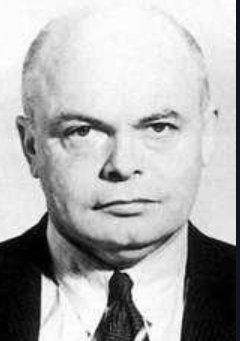Charles Jocelyn Hambro
( spook, banker) | ||||||||||||||||
|---|---|---|---|---|---|---|---|---|---|---|---|---|---|---|---|---|
 | ||||||||||||||||
| Born | 3 October 1897 | |||||||||||||||
| Died | 1963 (Age 65) | |||||||||||||||
| Alma mater | Harrow School | |||||||||||||||
| Parents | Charles Eric Hambro | |||||||||||||||
| Children | Baron Hambro | |||||||||||||||
| Relatives | Peter Hambro | |||||||||||||||
spooky UK banker. SOE head
| ||||||||||||||||
Charles Jocelyn Hambro was head of the Special Operations Executive for a period during the Second World War.[1] His first major action as head of the SOE was to meet with Colonel William Joseph Donovan, the head of the OSS and his opposite number.
Background
Hambro was born into a banking family of Jewish Danish origin which had settled in London in the early 19th century. He was the son of Sir Eric Hambro, a partner in C. J. Hambro & Son (later to become Hambros Bank), and a Conservative Member of Parliament.
In general, the historical Hambros Bank is regarded as being close to the British intelligence services[citation needed].
Career
After service in WW1, he joined the family bank. In 1920, the family's bank C. J. Hambro & Son merged with the British Bank of Northern Commerce, a bank with Stockholms Enskilda Bank (owned by the Wallenberg family) and additional Nordic banks as some of the owners. In 1921, the new bank was named Hambros Bank, with a business focus on the Nordic countries.
The 30-year-old Charles was elected to the Board of the Bank of England in 1928, and between 1932 and 1933 he put all work outside the bank aside to work on establishing the bank's exchange control division under the direction of Montagu C. Norman, the Bank of England director.
World War 2
At the start of the Second World War he was asked by Ronald Cross to join the Ministry of Economic Warfare, a cover organization for the Special Operations Executive. Hambro was placed in charge of activities in Scandinavia, arranging smuggling and sabotage operations.
Through his contact with Ebbe Munck, an anti-Nazi journalist, Hambro linked up with the Danish resistance, and was knighted as a Knight Commander of the Order of the British Empire for his work in 1941.
Together with his closest collaborator, Henry Sporborg, he managed a large part of the war trade policy concerning Sweden until 1943.[2] He was a member of the Anglo-Swedish Joint Standing Commission (JSC), chaired by Marcus Wallenberg Jr., and served on the British Legation in Stockholm in the spring and summer of 1940 as an attaché for the financial affairs, before returning to the Ministry of Economic Warfare.
Between December 1940 and November 1941, Hambro was also in charge of overseeing the French, Belgian, German and Dutch sections of the SOE, and from November 1941 he was deputy leader of SOE for 5 months. In 1942 he succeeded in persuading the British and Norwegian organisations to form a planning commission, which devised important sabotage missions.
The affluent Hambro refused to accept any wages for his military work during wartime.
Resignation
Hambro resigned in September 1943 after GHQ Middle East, the Foreign Office, and the Joint Intelligence Committee mounted an attack on SOE's autonomy.
For the rest of the war he acted as head of the "British raw materials mission" in Washington; a cover for exchanging information and technology between Britain and the United States which led to the detonation of the first Atomic Bomb as part of the Manhattan Project.